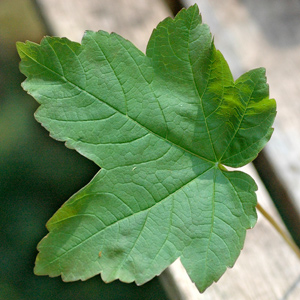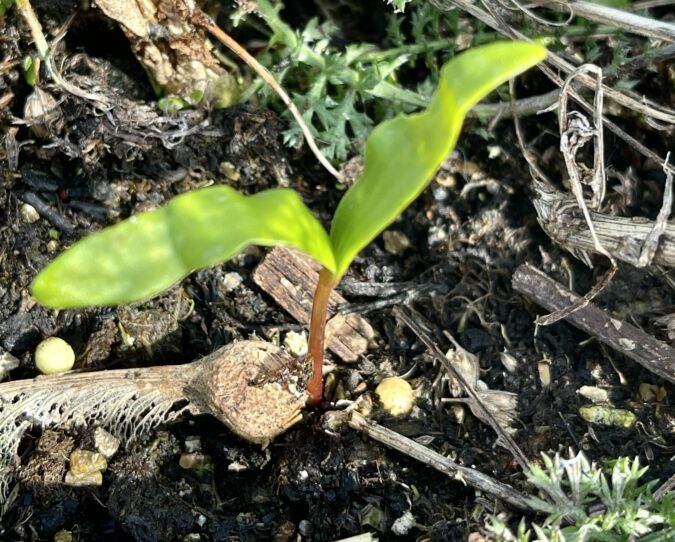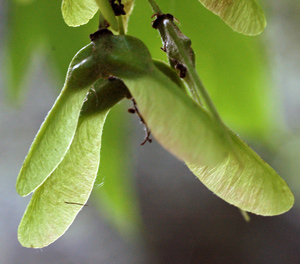Maples and the sycamore..

The plant genus Acer includes one hundred and thirty species. The Japanese maple (Acer palmatum) has over a thousand cultivars, and includes many garden favourites - often small trees with delicate, finely divided leaves, which produce vivid colours in autumn; it is often used in making bonsai specimens. However, Acer pseudoplatanus — the sycamore, is by no means delicate.
The sycamore is a large tree, often reaching a height of 35 to 40 metres, and is long lived with a life span that may extend for four hundred years. It has large palmate leaves (see image) that turn yellow-brown colour at leaf fall. These leaves can form a thick layer on the ground. If they fall in your garden, they can smother smaller, delicate plants. The tree also produces large quantities of its winged seeds (double samaras). After exposure to the cold of winter, the seeds may germinate and litter your garden with numerous seedlings.  These can rapidly establish themselves as young saplings. Because of its capacity for seed production and its effective dispersal mechanism it can become locally invasive.
These can rapidly establish themselves as young saplings. Because of its capacity for seed production and its effective dispersal mechanism it can become locally invasive.
The sycamore is not a native tree and is not currently classified as an invasive species. It was introduced into Britain, probably sometime around the 1500’s. At present, it is classified by some as a neophyte - that is, a plant that has naturalised but arrived on or after 1500 CE. It arrived from Central Europe and, or many years, remained ‘unobtrusive’. The sycamore is present in 90% of hectads in Britain; a hectad is a 10 km by 10 km square.  Thus, the sycamore is found in more hectads than any native tree.
Thus, the sycamore is found in more hectads than any native tree.
The sycamore can outcompete native species like oak and beech, and shade out understory plants. On a more positive note, it does provide a habitat for various moth caterpillars, aphids, birds and lichens - though a sycamore does not support as many species as an oak. A veteran oak can ‘host’ many hundreds of plant and animal species.
Sycamores can thrive in a variety of soils and climatic conditions, and are quite tolerant of wind and pollution. They are now widespread in woodlands, hedgerows, parks and urban areas, making them a prominent feature of the British landscape.
Comments are closed for this post.
